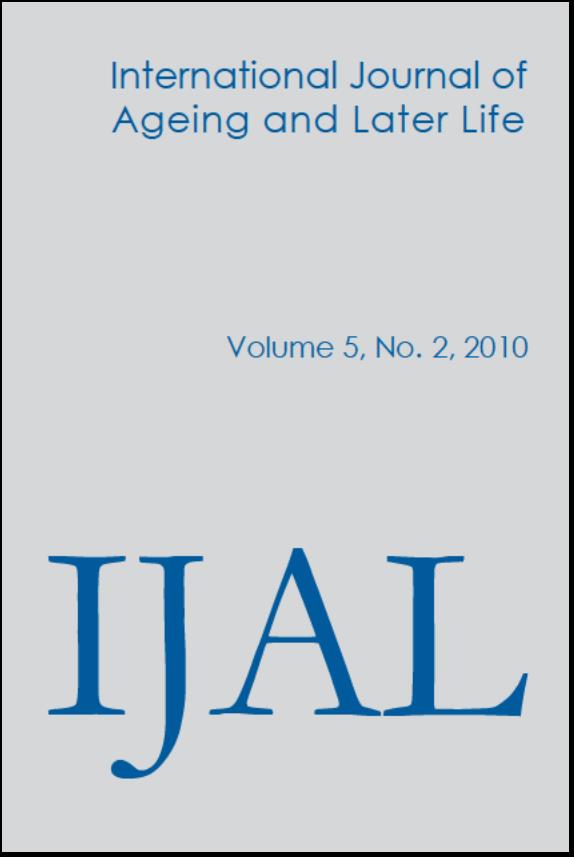Ethno-cultural diversity in home care work in Canada
Main Article Content
Abstract
Worldwide, immigrant workers are responsible for much of the care provided to elderly people who require assistance with personal care and with activities of daily living. This article examines the characteristics of immigrant home care workers, and the ways in which they differ from non-migrant care workers in Canada. It considers circumstances wherein the labor of care is framed by ethno-cultural diversity between client and worker, interactions that reflect the character of this ethno-cultural diversity, and the strategies employed by workers to address issues related to this diversity. Findings from a mixed methods study of 118 workers in the metropolitan area of Vancouver, British Columbia, Canada, indicate that while the discriminatory context surrounding migrant home care workers persists, issues of ethno-cultural diversity in relationships are complex, and can also involve non-foreign born workers.
Multi-cultural home care is not always framed in a negative context, and there often are positive aspects.
Metrics
Article Details

This work is licensed under a Creative Commons Attribution-NonCommercial 3.0 Unported License.
Since 2020 the International Journal of Ageing and Later Life uses a Creative Commons: Attribution license, which allows users to distribute the work and to reform or build upon it without the author's permission. Full reference to the author must be given.
References
Agho, A. O., Mueller, C. W. & Price, J. L. (1993). Determinants of employee job satisfaction: An empirical test of a causal model. Human Relations 46(8): 1007–1027.doi:10.1177/001872679304600806
Agho, A. O., Price, J. L. & Mueller, C. W. (1992). Discriminant validity of measures of job satisfaction, positive affectivity and negative affectivity. Journal of Occupational & Organizational Psychology 65(3): 185–196.
Aronson, J. & Neysmith, S. M. (1996). ‘You’re not just in there to do the work’: Depersonalizing policies and the exploitation of home. Gender & Society 10(1): 59–77.doi:10.1177/089124396010001005
Ayalon, L. (2008). Evaluating the working conditions and exposure to abuse among Filipino home are workers in Israel: Characteristics and clinical correlates. International Psychogeriatrics 21(1): 40–49.doi:10.1017/S1041610208008090PMid:19040784
Ayalon, L. (2009). Family and family-like interactions in households with round-the-clock paid foreign carers in Israel. Ageing and Society 29(5): 671–686.doi:10.1017/S0144686X09008393
Babin, B. J. & Boles, J. S. (1998). Employee behavior in a service environment: A model and test of potential differences between men and women. The Journal of Marketing 62(2): 77–91.doi:10.2307/1252162
Brayfield, A. H. & Rothe, H. F. (1951). An index of job satisfaction. Journal of Applied Psychology 35(5): 307–311.doi:10.1037/h0055617
Chappell, N., Gee, E., McDonald, L. & Stones, M. (2003). Aging in Contemporary Canada. Toronto: Prentice Hall.
Cognet, M. & Fortin, S. (2003). Le poids du genre et de l’ehnicité dans la division du travail en santé. Liens social et politiques 49: 155–172.
Curry, J. P., Wakefield, D. S., Price, J. L. & Mueller, C. W. (1986). On the causal ordering of job satisfaction and organizational commitment. Academy of Management Journal 29(4): 847–858.doi:10.2307/255951
Doyle, M. & Timonen, V. (2009). The different faces of care work: Understanding the experiences of the multi-cultural care workforce. Ageing & Society 29: 337–350.doi:10.1017/S0144686X08007708
Doyle, M. & Timonen, V. (2010). Obligations, ambitions, calculations: Migrant care workers’ negotiation of work, career, and family responsibilities. Social Politics: International Studies in Gender, State & Society, 1–24. Advance online publication. doi: 10.1093/sp/jxp026
Durst, D. (2008). More snow on the roof: Canada’s immigrant seniors. The Bridge, 2. Available on http://canada.metropolis.net/pdfs/durst_e.pdf (Accessed: November 15, 2010).
Koehn, S. (2009). Negotiating candidacy: Ethnic minority seniors’ access to care. Ageing & Society 29(4): 585–608.doi:10.1017/S0144686X08007952
Martin-Matthews, A. (2007). Situating ‘home’ at the nexus of the public and the private spheres: Ageing, gender and home support work in Canada. Current Sociology 55(2): 229–249.doi:10.1177/0011392107073305
Martin-Matthews, A. & Sims-Gould, J. (2008). Employers, home support workers and elderly clients: Identifying key issues in delivery and receipt of home support. Healthcare Quarterly 11(4): 69–75.PMid:18818533
Meintel, D., Fortin, S. & Cognet, M. (2006). On the road and on their own: Autonomy and giving in home health care in Quebec. Gender, Place & Culture: A Journal of Feminist Geography 13(5): 563–580.
Misra, J., Woodring, J. & Merz, S. (2006). The globalization of care work: Neoliberal economic restructuring and migration policy. Globalizations 3(3): 317–332.doi:10.1080/14747730600870035
Neysmith, S. M. & Aronson, J. (1997). Working conditions in home care: Negotiating race and class boundaries in gendered work. International Journal of Health Services 27(3): 479–499.doi:10.2190/3YHC-7ET5-5022-8F6LPMid:9285278
Okolo, B. N. (1990). Health Research Design and Methodolgy. Boca Raton, FL: CRC Press.
Phillips, J. E. (2007). Care. Cambridge, UK: Polity Press.
Riordan, C. M. & Vandenberg, R. J. (1994). A central question in cross-cultural research: Do employees of different cultures interpret work-related measures in an equivalent manner? Journal of Management 20: 643–667.
Saari, L. M. & Judge, T. (2004). Employee attitudes and job satisfaction. Human Resource Management 43(4): 395–407.doi:10.1002/hrm.20032
Shafer, W. E. (2002). Ethical pressure, organizational-professional conflict, and related work outcomes among management accountants. Journal of Business Ethics 8: 263–275.
Sims-Gould, J. & Martin-Matthews, A. (2010). Strategies used by home support workers in the delivery of care to elderly clients. Canadian Journal on Aging 29(1): 97–107.doi:10.1017/S0714980809990353PMid:20202268
Stacey, C. L. (2005). Finding dignity in dirty work: The constraints and rewards of low-wage home care labour. Sociology of Health & Illness 27(6): 831–854.doi:10.1111/j.1467-9566.2005.00476.x
Statistics Canada. (1996). Census of Canada 1996: Dimension series. Available on http://toby.library.ubc.ca/resources/infopage.cfm?id_916 (Accessed: September 23, 2009).
Statistics Canada. (2006). Census of Canada 2006: Special interest profiles. Available on http://toby.library.ubc.ca/resources/infopage.cfm?id_1582 (Accessed: September 23, 2009).
Statistics Canada & Employment Equity Data Program. (1990). Profile of Visible Minorities and Aboriginal Peoples: 1986 Census, 20% Sample Data. Ottawa: Statistics Canada.
Stemler, S. (2001). An overview of content analysis. Practical Assessment, Research & Evaluation 7(17). Available on http://PAREonline.net/getvn.asp?v_7&n_17 (Accessed: April 28, 2010).
Stone, R. I. & Dawson, S. L. (2008). The origins of better jobs better care. The Gerontologist 48(1): 5–13.PMid:18694981
Timonen, V. & Doyle, M. (2010). Migrant care workers’ relationships with care recipients, colleagues and employers. European Journal of Women’s Studies 17(1): 25–41.doi:10.1177/1350506809350859
Zaman, H., Cecilia, D. & Scott, R. (2007). Workplace Rights for Immigrants in BC: The Case of Filipino Workers. Vancouver, BC: Canadian Centre for Policy Alternatives.





